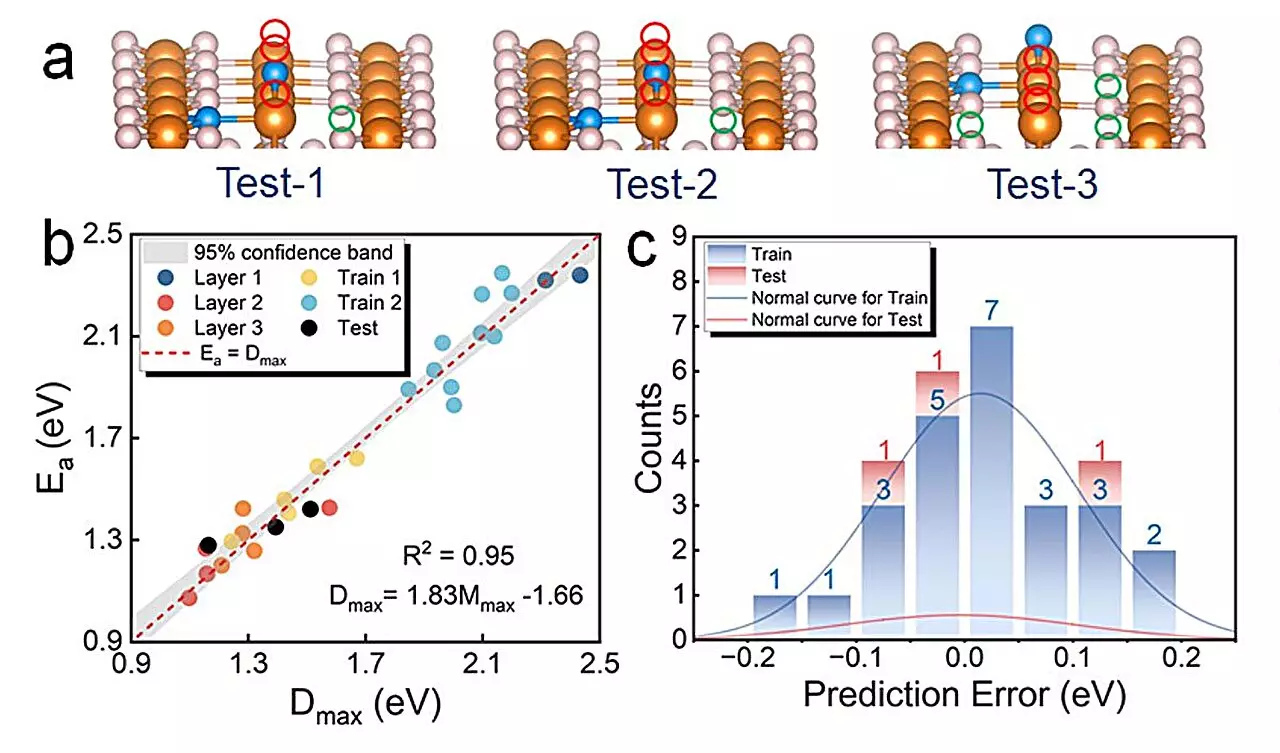In the realm of sustainable energy solutions, hydrogen has garnered attention for its versatility and clean energy potential. One promising material for solid-state hydrogen storage is magnesium hydride (MgH2), known for its high storage capacity and resource abundance. Despite decades of research, MgH2 has not met the performance targets set by the US Department of Energy (US-DOE), highlighting the need for innovative approaches to enhance hydrogen storage technologies.
Challenges in Assessing Hydrogen Storage Efficiency
The efficiency of hydrogen storage materials is typically evaluated based on dehydrogenation enthalpy and energy barriers. However, calculating these barriers, particularly the latter, can be complex and computationally intensive. Traditional methods for determining dehydrogenation barriers using transition state search techniques are costly and time-consuming, hampering the progress of discovery and optimization in this field.
To address these challenges, a research team has developed a data-driven model that predicts dehydrogenation barriers using easily computable parameters – the crystal Hamilton population orbital of the Mg-H bond and the distance between atomic hydrogen atoms. By establishing a distance-energy ratio, this model offers a more efficient way to capture the essential chemistry of reaction kinetics with reduced computational demands compared to conventional methods.
The findings of this research have been published in the journal Angewandte Chemie International Edition, showcasing the potential of the predictive model in revolutionizing hydrogen storage technologies. Associate professor Hao Li, the corresponding author of the paper, emphasized the model’s ability to bridge the knowledge gap left by experimental techniques and accelerate the development of high-performance hydrogen storage solutions.
Validation and Future Applications
The model’s predictive power has been validated against typical experimental measurements, demonstrating excellent agreement and providing clear design guidelines to enhance the performance of MgH2. This breakthrough not only brings magnesium hydride closer to the US-DOE targets but also opens up possibilities for broader applications in other metal hydrides. The research team envisions extending the model’s application to different metal hydrides, enabling rapid recalibration and facilitating the discovery of new composite materials for innovative solid-state hydrogen storage solutions.
The development of data-driven predictive models represents a significant advancement in the field of hydrogen storage technologies. By offering a faster and more efficient way to predict dehydrogenation performance, researchers are paving the way for cleaner and more efficient energy systems. The adaptability of these models to various metal hydrides holds promise for accelerating the exploration and optimization of hydrogen storage materials, ultimately contributing to the transition to sustainable energy solutions.


Leave a Reply